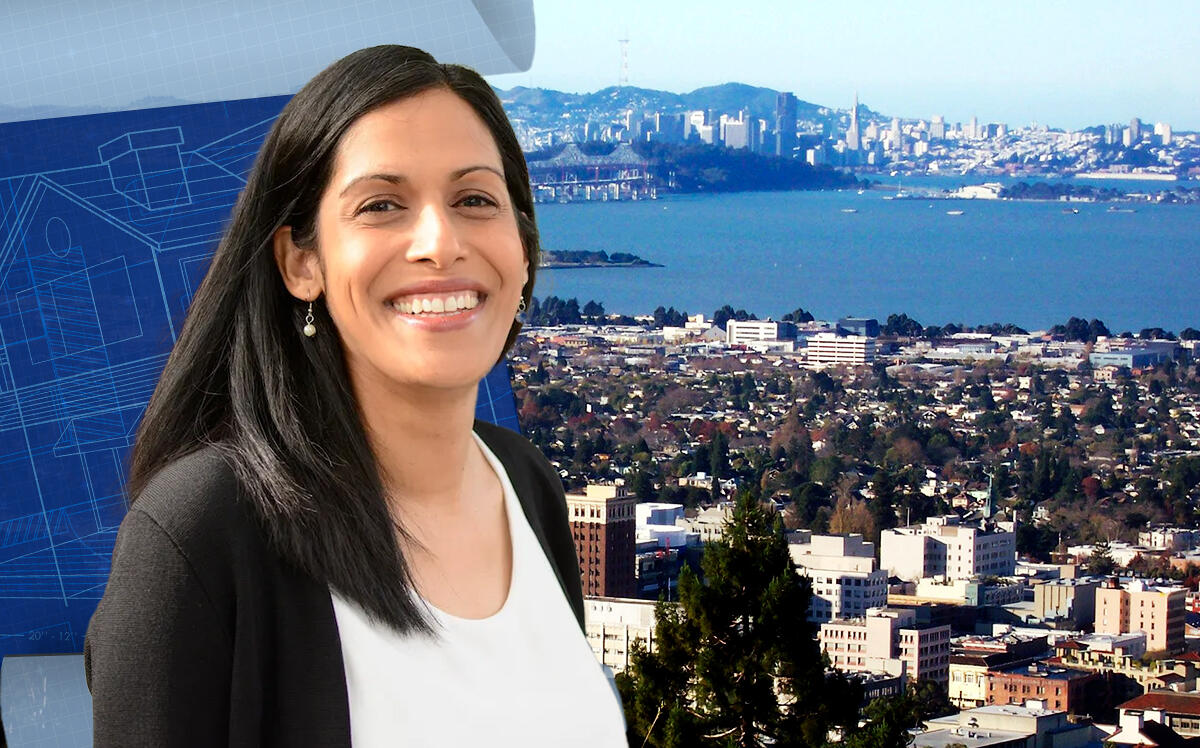
Councilwoman Rashi Kesarwani and the city of Berkeley (Rashi Kesarwani, Wikipedia)
Berkeley has greenlit a state-mandated plan to find room for nearly 9,000 new homes over the next eight years and could avoid triggering builder’s remedy.
The East Bay city voted to update the city’s zoning rules to plan for 8,934 new homes for its required housing element before the Jan. 31 deadline, the San Jose Mercury News reported.
After the state Department of Housing and Community Development rejected Berkeley’s previous draft in November, the council worked to find a clearer path to removing sluggish construction hurdles and building denser housing.
The nearly 9,000 new homes is three times the number of units the city was required to accommodate in its last eight-year building cycle.
Planning Director Jordan Klein declared city staff “feel strongly that our Housing Element is fully compliant.”
The nine-member council voted to update zoning rules to allow for higher growth along College, Solano and North Shattuck avenues by the end of 2026.
The change, authored by Councilwoman Rashi Kesarwani, would help “formerly red-lined and higher-resource areas” do their fair share of the big housing lift.
“Existing zoning is based on racial exclusion — single-family zoning was invented in the Claremont Elmwood neighborhood to keep people of color from being able to live there,” Kesarwani said.
If the current rules and regulations stayed in place, most new construction would likely occur in Downtown, West and South Berkeley.
Failure by state cities and counties to get its housing plan approved could result in a loss of control of local land-use decisions, as well as access to key funding for affordable housing and infrastructure.
Lawsuits and fines are also on the line if state regulators decide the council’s latest plan still misses the mark. If they miss the mark, the builder’s remedy policy would take effect and could automatically approve housing projects that designate at least 20 percent of their plans for affordable units.
A majority of draft Housing Elements from across the Bay Area were sent back to the drawing board late last year — indicating the state’s increased demands. The Bay Area must find room for 441,000 new homes by 2031.
Nearby Alameda, one of the few cities to get its housing element cleared in 2022, plans to accommodate 5,400 new homes. San Francisco must plan for 82,000 homes, San Jose 62,200 homes, while Oakland must find room for 26,300 units.
San Jose, the Bay Area’s largest city, has no intention of meeting its housing plan deadline, and faces stiff penalties, funding losses and controversial builder’s remedy approvals.
— Dana Bartholomew
Read more

